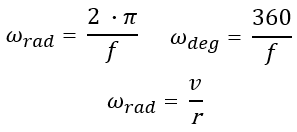
On or linked-to by the Website infringes your copyright, you should consider first contacting an attorney. Thus, if you are not sure content located Misrepresent that a product or activity is infringing your copyrights. Please be advised that you will be liable for damages (including costs and attorneys’ fees) if you materially Your Infringement Notice may be forwarded to the party that made the content available or to third parties such Means of the most recent email address, if any, provided by such party to Varsity Tutors. Infringement Notice, it will make a good faith attempt to contact the party that made such content available by If Varsity Tutors takes action in response to Information described below to the designated agent listed below. Or more of your copyrights, please notify us by providing a written notice (“Infringement Notice”) containing

If you believe that content available by means of the Website (as defined in our Terms of Service) infringes one For example, when the ball is at the bottom of the circle, the force of gravity is away from the center of the circle, so tension must be higher to keep the center pull constant. The force of gravity is always down and constant, so the tension needs to change in order to keep the center pulling force the same. There are two forces on the ball, gravity and tension. For example, at the top of its path, the centripetal force must be down because that's the direction of the center of its circle of motion, but at the bottom, the centripetal force must be up. This is true because the ball needs the same center pulling force (centripetal force) throughout its path, but this centripetal force is constantly changing direction. The only the changing is the tension in the string. The ball's angular momentum is always constant since its mass, the radius of the circle it's traveling in, and its speed are constant. The string's pull on the ball is always perpendicular to the ball's motion, so it isn't doing any work, and thus has a constant rate of work. The force of gravity on the ball is always its mass times gravity, which is constant. The linear speed of the car wheel at the outer edge is 22.0 m/s.Let's go through each answer choice one by one. The formula v = ωr can be used again to solve for the linear speed at that radius: This is also the angular speed at the outer edge of the wheel, where the radius is r = 0.220 m. The formula v = ωr can be rearranged to solve for the angular speed ω: To solve this problem, first find the angular speed using the linear speed at the position of the sensor, 0.080 m. If the radius of the wheel is 0.220 m, what is the linear speed on the outer edge of the wheel?Īnswer: The linear speed is different at different distances from the center of rotation, but the angular speed is the same everywhere on the wheel. At that position, the sensor reads that the linear speed of the wheel is 8.00 m/s.

The sensor is 0.080 m from the center of rotation.

Radians are a "placeholder" unit, and so they are not included when writing the solved value for linear speed.Ī sensor is connected inside a car wheel, which measures the linear speed. The linear speed of a point on the surface of the drill bit is approximately 0.126 m/s. Using the formula v = ωr, the linear speed of a point on the surface of the drill bit is, The diameter of the drill bit is given, in units of millimeters. The distance between the center of rotation and a point on the surface of the drill bit is equal to the radius. The revolutions per second must be converted to radians per second. What is the linear speed of a point on the surface of the drill bit, in meters per second?Īnswer: The first step is to find the angular speed of the drill bit. The diameter of the drill bit is 4.00 mm. Linear Speed Formula (Rotating Object) Questions:ġ) A power drill is on, and spinning at 10.0 revolutions per second (rev/s).


 0 kommentar(er)
0 kommentar(er)
